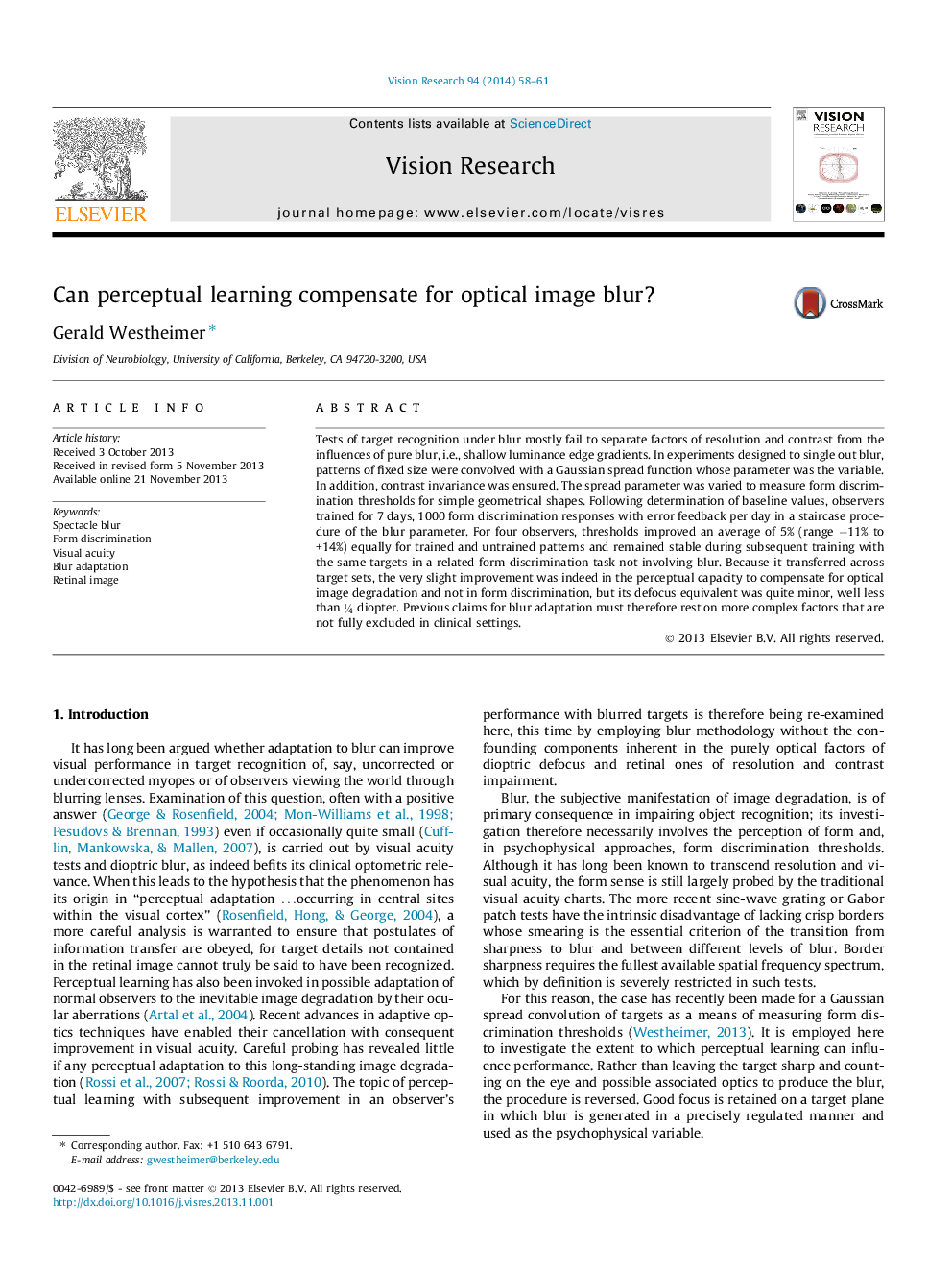| Article ID | Journal | Published Year | Pages | File Type |
|---|---|---|---|---|
| 6203502 | Vision Research | 2014 | 4 Pages |
â¢Form discrimination was measured by varying image degradation not size.â¢Performance remained stable during 7 days of training, 1000 trials/day.â¢There was essentially no perceptual learning of blur adaptation.
Tests of target recognition under blur mostly fail to separate factors of resolution and contrast from the influences of pure blur, i.e., shallow luminance edge gradients. In experiments designed to single out blur, patterns of fixed size were convolved with a Gaussian spread function whose parameter was the variable. In addition, contrast invariance was ensured. The spread parameter was varied to measure form discrimination thresholds for simple geometrical shapes. Following determination of baseline values, observers trained for 7 days, 1000 form discrimination responses with error feedback per day in a staircase procedure of the blur parameter. For four observers, thresholds improved an average of 5% (range â11% to +14%) equally for trained and untrained patterns and remained stable during subsequent training with the same targets in a related form discrimination task not involving blur. Because it transferred across target sets, the very slight improvement was indeed in the perceptual capacity to compensate for optical image degradation and not in form discrimination, but its defocus equivalent was quite minor, well less than ¼ diopter. Previous claims for blur adaptation must therefore rest on more complex factors that are not fully excluded in clinical settings.
